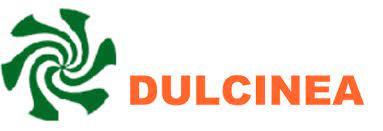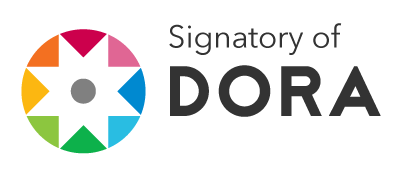Infographics on presidential election campaigns on social networks
The Candidate Claudia Sheinbaum Pardo, Mexico 2024
DOI:
https://doi.org/10.62701/revsocial.v13.5453Keywords:
dAbstract
This study examines the use of infographics in the 2024 Mexican presidential campaign, with a focus on Claudia Sheinbaum’s digital communication strategy. Infographics, widely recognized in journalism, education, and science, are increasingly used in political campaigns due to their visual appeal and capacity to communicate complex information quickly. The research explores how infographics are utilized on social media to engage the public, convey trust, and reinforce political messaging. Prior studies have revealed that infographics can be powerful tools for persuasion and interaction, especially among younger voters, such as Generation Z, who value authentic and relatable content. The paper highlights a gap in the academic literature regarding the specific use of infographics in Latin American political communication. It also emphasizes the importance of understanding how design elements, such as color and layout, influence audience perception and political affinity, particularly when used by ruling parties or candidates leading in the polls.
Downloads
Global Statistics ℹ️
|
347
Views
|
121
Downloads
|
|
468
Total
|
|
References
Alejandre Ramírez, G. L. (2020). Política pública e intervención con Perspectiva de Género en la agenda de la Cuarta Transformación. Expectativas, hechos y realidades ante la violencia contra las mujeres. Buen Gobierno, 28, 108-125. https://doi.org/10.35247/buengob_28_05 DOI: https://doi.org/10.35247/buengob_28_05
Alieva, I. (2021). How American Media Framed 2016 Presidential Election Using Data Visualization: The Case Study of the New York Times and the Washington Post. Journalism Practice, 17(4), 814–840. https://doi.org/10.1080/17512786.2021.1930573 DOI: https://doi.org/10.1080/17512786.2021.1930573
Amit-Danhi, E. R., & Shifman, L. (2018). Digital political infographics: A rhetorical palette of an emergent genre. New Media & Society, 20(10), 3540-3559. https://doi.org/10.1177/1461444817750565 DOI: https://doi.org/10.1177/1461444817750565
Amit-Danhi, E. R., & Shifman, L. (2020). Off the charts: user engagement enhancers in election infographics. Information, Communication & Society, 25(1), 55–73. https://doi.org/10.1080/1369118X.2020.1761858 DOI: https://doi.org/10.1080/1369118X.2020.1761858
Anderson, E. K., Bishop, R., & Cross, N. (2019). Dealing with Data: Instructing with Infographics in an Undergraduate Sociology Course. College Teaching, 67(1), 36–49. https://doi.org/10.1080/87567555.2018.1518890 DOI: https://doi.org/10.1080/87567555.2018.1518890
Animal Político. (2024, May 25). ¿Quiénes son los candidatos a la presidencia de México? Conoce a Sheinbaum, Xóchilt y Máynez. https://tinyurl.com/5yf6vsj6
Atlas. Ti. (2023). Análisis del acuerdo entre codificadores. Codificación y recuperación. https://tinyurl.com/3dxvs2e7
Barizon Filho, A. L., & Cremonez Rosa, P. H. (2021). Appropriation of Information in Data Visualization. InfoDesign - Revista Brasileira De Design Da Informação, 18(3), 105-116. https://doi.org/10.51358/id.v18i3.908 DOI: https://doi.org/10.51358/id.v18i3.908
Bernal-Gamboa, L., & Guzmán-Cedillo, Y. (2021). El impacto de las infografías en la retención de información por parte de estudiantes de psicología. Revista Colombiana de Educación, 1(83), 1-17. https://doi.org/10.17227/rce.num83-10700 DOI: https://doi.org/10.17227/rce.num83-10700
Branding, M. (2021). Social media marketing 2021. Babelcube
Brigas, J., Gonçalves, F., & Gonçalves, J. . (2023). Visual journalism in the Iberian press. Visual Review. International Visual Culture Review, 15(1), 1–8. https://doi.org/10.37467/revvisual.v15.4993 DOI: https://doi.org/10.37467/revvisual.v15.4993
Borromeo-García, C. A. (2023). Validación de instrumentos de recolección de información: implementando el modelo Tristán/Lawshe. Universciencia, 21(6), 14-24. https://revista.soyuo.mx/index.php/uc/article/view/250/371
Data Reportal. (2024, February 23). Digital 2024: Mexico. https://tinyurl.com/ytw93a5b
Díaz-López, M. M. (2021). Aprendizaje significativo de bioseguridad a través de infografías interactivas. Educación Médica Superior, 35(2), 1-14. http://scielo.sld.cu/pdf/ems/v35n2/1561-2902-ems-35-02-e2736.pdf
Hernández-Fernández, A., & Morera-Vidal, F. (2022). Infographics, a Better Medium than Plain Text for Increasing Knowledge. Grafica, 10(19), 23-40. https://doi.org/10.5565/rev/grafica.204 DOI: https://doi.org/10.5565/rev/grafica.204
Instituto Nacional Electoral. (2024). Programa de Resultados Electorales Preliminares 2024. Elecciones Federales. https://prep2024.ine.mx/publicacion/nacional/presidencia/nacional/candidatura
Ivars-Nicolás, B. (2019). La infografía periodística en España: Definición y tipología de uso. Estudios sobre el Mensaje Periodístico, 25(1), 283-302. https://doi.org/10.5209/ESMP.63729 DOI: https://doi.org/10.5209/ESMP.63729
Jiménez, N. (2024, Mayo 13). Sheinbaum ha encabezado 491 actos de campaña; Gálvez, 100. La Jornada. https://www.jornada.com.mx/2024/05/13/politica/004n2pol
Larrosa Fuentes, J. S. (2021). La trasformación digital de las campañas políticas: el caso de las elecciones al gobierno de Jalisco en 2018. En R. E., Prado Pérez & J. E., Rocha Quintero. Elecciones en Jalisco 2018: Hallazgos y consideraciones (pp. 65-80). Instituto Tecnológico y de Estudios Superiores de Occidente. DOI: https://doi.org/10.2307/j.ctv2s2ppcs.7
Larrosa-Fuentes, J. S., & García-Chávez, M. T. (2020). Interactividad controlada entre élites políticas y ciudadanos: diálogos públicos en Facebook en las campañas electorales jaliscienses de 2018. Virtualis, 11(21), 179-198. https://doi.org/10.2123/virtualis.v11i21.357
Luna-Gijón, G. (2023a). Clasificación de la infografía y de la visualización de contenidos informativos desde la teoría y práctica del Diseño de Información. Zincografía, 6(12), 51-77. https://doi.org/10.32870/zcr.v6i12.155 DOI: https://doi.org/10.32870/zcr.v6i12.155
Luna-Gijón, G. (2023b). El diseño de información en la comunicación de la ciencia: Evaluando la efectividad de tres infografías científicas. Gráfica, 11(22), 159-170. https://doi.org/10.5565/rev/grafica.267 DOI: https://doi.org/10.5565/rev/grafica.267
Medina Cetout, M. L., & Ayala Ramos, S. I. (2022). El uso de la infografía como Objeto Virtual de Aprendizaje para la instrucción de la alfabetización informacional. Acceso. Revista Puertorriqueña De Bibliotecología y Documentación, 3(1), 1-12. https://revistas.upr.edu/index.php/acceso/article/view/20359
Montes-Rojas, M. L., García-Gil, J., & Alonso Leija-Román, D. (2020). Visualización mediática de la ciencia: tipología de la infografía científica de prensa. Revista Española de Documentación Científica, 43(2), e266. https://doi.org/10.3989/redc.2020.2.1643 DOI: https://doi.org/10.3989/redc.2020.2.1643
Montoya-Bermúdez, D., & Ferré-Pavia C. (2022). Estrategias de comunicación transmedia en campañas políticas: Los casos de Colombia y México en las elecciones presidenciales de 2018. Latin American Research Review, 57(2), 369-387. https://doi.org/10.1017/lar.2022.34 DOI: https://doi.org/10.1017/lar.2022.34
Naparin, H., & Saad, A. B. (2017). Infographics in Education: Review on Infographics design. The International Journal of Multimedia & Its Applications, 9, 15-24. http://doi.org/10.5121/ijma.2017.9602 DOI: https://doi.org/10.5121/ijma.2017.9602
Parmelee, J. H., Perkins, S. C., & Beasley, B. (2022). Personalization of politicians on Instagram: what Generation Z wants to see in political posts. Information, Communication & Society, 26(9), 1773–1788. https://doi.org/10.1080/1369118X.2022.2027500 DOI: https://doi.org/10.1080/1369118X.2022.2027500
Rivera Salas, P. E. (2019). Infografias de salud publicadas por organizaciones y autoridades sanitarias en la red social pinterest. Revista de Investigación en Tecnologías de la Información, 7(13), 92–100. https://riti.es/index.php/riti/article/view/127
Salvat Martinrey, G., & Aranda Martínez, S. (2020). Análisis de contenido de la prensa diaria española sobre el uso de la infografía para informar de la crisis sanitaria de la COVID-19. Revista de Comunicación y Salud, 10(2), 185–210. https://doi.org/10.35669/rcys.2020.10(2).185-210 DOI: https://doi.org/10.35669/rcys.2020.10(2).185-210
Sánchez Salazar, B. (2021). Infografía, la mirada creative de la información. Revista Digital Universitaria, 22(6). 1-4. http://doi.org/10.22201/cuaieed.16076079e.2021.22.6.11 DOI: https://doi.org/10.22201/cuaieed.16076079e.2021.22.6.11
Sanz-Lorente, M., García-Sánchez, A., Sanz-Valero, J., & Wanden-Berghe, C. (2020). Infografías en las ciencias de la salud: aplicación en las enfermedades de transmisión sexual. Journal of Negative and No Positive Results, 5(7), 689-701. https://dx.doi.org/10.19230/jonnpr.3483
Soler Milánes, L. & Gómez Masjuán, M. E. (2018). #MakeAmericaHateAgain. Análisis del discurso político de Donald Trump en Twitter. Alcance, 7(18), 153-172. http://scielo.sld.cu/pdf/ralc/v7n18/2411-9970-ralc-7-18-153.pdf
Suárez Giraldo, C., & Martínez-Guerrero, C. A. (2020). La imagen que nos falta de la ciencia: infografías en la divulgación científica. In C. A. Martinez-Guerrero, M. Gutiérrez Ramírez, C. Suárez-Giraldo & O. Caicedo Alarcón. Investigar, publicar y divulgar. Ciencia en infografías (pp. 7-9). Universidad EAFIT. https://doi.org/10.17230/9789585145078vdyc1 DOI: https://doi.org/10.17230/9789585145078vdyc1
Tarkhova, L., Tarkhov, S., Nafikov, M., Akhmetyanov, I., Gusev, D., & Akhmarov, R. (2020). Infographics and Their Application in the Educational Process. International Journal of Emerging Technologies in Learning (IJET), 15(13), 63-80. https://doi.org/10.3991/ijet.v15i13.14647 DOI: https://doi.org/10.3991/ijet.v15i13.14647
Unsworth, L. (2021). Infografías científicas en secundaria: Complejos de significados multimodales en ensambles compuestos verbales-visuales. Pensamiento educativo, 58(2), 00109. https://dx.doi.org/10.7764/pel.58.2.2021.9 DOI: https://doi.org/10.7764/PEL.58.2.2021.9
Valero Sancho, J. L., & Morera Vidal, F. (2019). La visualización infográfica: Estudio de su efectividad en la interpretación de audiencias activas. Estudios sobre el Mensaje Periodístico, 25(2), 1153-1170. https://doi.org/10.5209/esmp.64831 DOI: https://doi.org/10.5209/esmp.64831
Ventura Salom, B., Tabuenca Bengoa, M., & González-Díez, L. (2023). Propuesta metodológica para el análisis de infografías en publicaciones periódicas. Comunicación & Métodos, 5(2), 5-18. https://doi.org/10.35951/v5i2.194 DOI: https://doi.org/10.35951/v5i2.194
Wang, M. H., Chang, W. Y., Kuo, K. H., & Tsai, K. Y. (2023). Analyzing image-based political propaganda in referendum campaigns: from elements to strategies. EPJ Data Science, 12(29), 1-20. https://doi.org/10.1140/epjds/s13688-023-00407-4 DOI: https://doi.org/10.1140/epjds/s13688-023-00407-4
Downloads
Published
How to Cite
Issue
Section
License
Copyright (c) 2025 Authors retain copyright and transfer to the journal the right of first publication and publishing rights

This work is licensed under a Creative Commons Attribution-NoDerivatives 4.0 International License.
Those authors who publish in this journal accept the following terms:
-
Authors retain copyright.
-
Authors transfer to the journal the right of first publication. The journal also owns the publishing rights.
-
All published contents are governed by an Attribution-NoDerivatives 4.0 International License.
Access the informative version and legal text of the license. By virtue of this, third parties are allowed to use what is published as long as they mention the authorship of the work and the first publication in this journal. If you transform the material, you may not distribute the modified work. -
Authors may make other independent and additional contractual arrangements for non-exclusive distribution of the version of the article published in this journal (e.g., inclusion in an institutional repository or publication in a book) as long as they clearly indicate that the work was first published in this journal.
- Authors are allowed and recommended to publish their work on the Internet (for example on institutional and personal websites), following the publication of, and referencing the journal, as this could lead to constructive exchanges and a more extensive and quick circulation of published works (see The Effect of Open Access).













